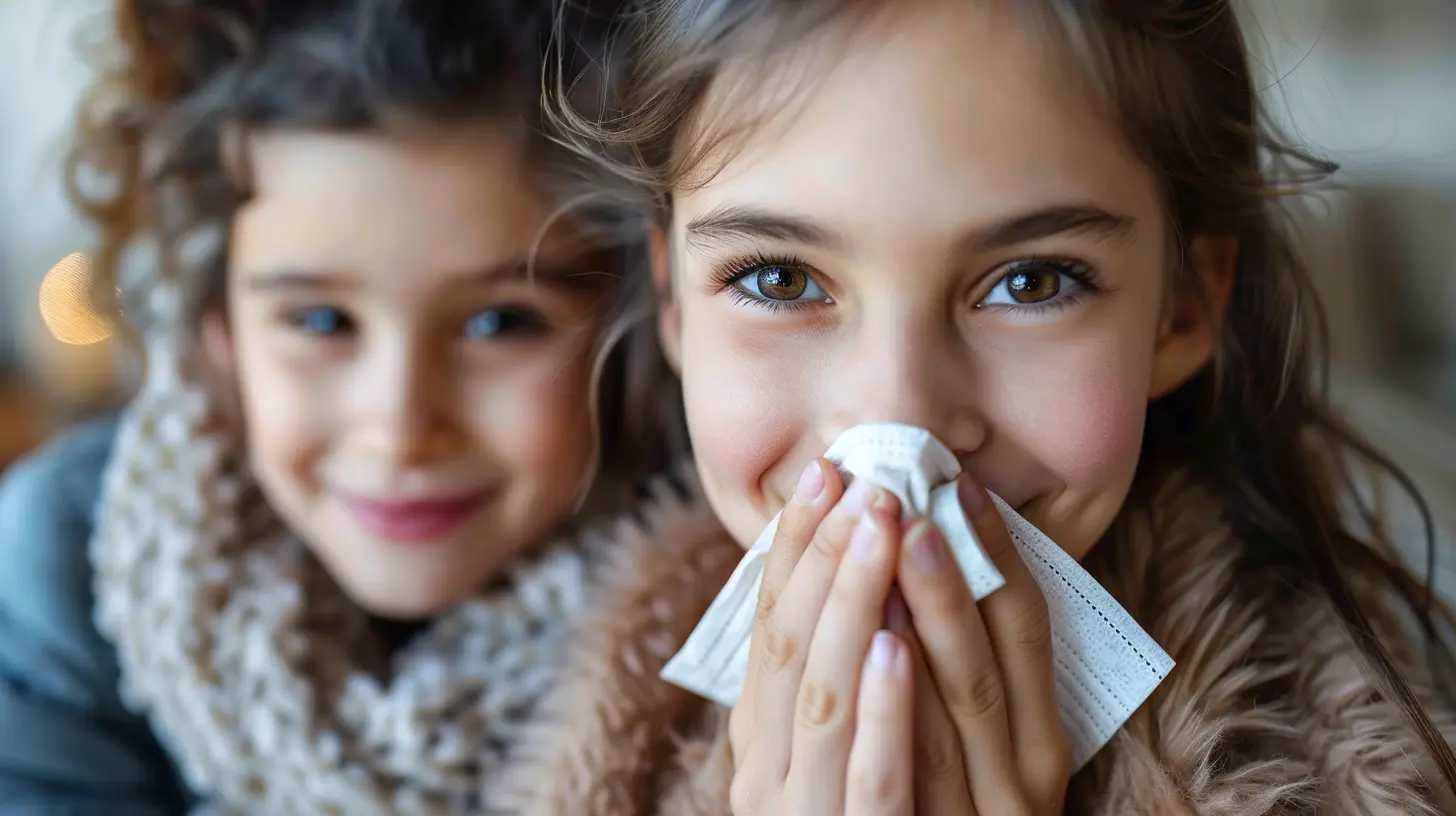15 April 2025
You know that dreaded moment—you start sneezing, your throat feels like sandpaper, and your body aches like you've been hit by a truck. Yep, it's a cold or the flu. We've all been there. But here’s the real kicker: as much as you’re suffering, you really don’t want to bring down your entire household with you, right?
Passing on the cold or flu can turn one sick person into a house full of coughing, sneezing zombies. So, how do you avoid spreading these pesky viruses to your loved ones while you're battling them yourself?
Let’s dive into the nitty-gritty and talk realistic, science-backed, everyday ways to be a responsible, considerate, non-spreader of germs. (Yes, even when you're feeling like death warmed over.)
Understanding the Enemy: What Are Cold and Flu Viruses?
Before we get into the prevention game plan, let’s quickly break down our microscopic enemies.The common cold is typically caused by rhinoviruses, while influenza (the flu) comes from influenza viruses. Both are highly contagious and spread mainly through droplets when a sick person coughs, sneezes, or even talks. They can also hitch a ride on surfaces, waiting for the next unsuspecting victim to touch their face—eyes, nose, or mouth—and let them in.
Bottom line: these viruses are tiny but mighty, and they spread like gossip in a small town.
1. Isolate Yourself (Yes, Like a Celebrity Avoiding the Paparazzi)
Let’s start with the obvious—it’s essential to put some distance between you and your family members.Here’s how to properly “quarantine” at home:
- Stay in one room as much as possible. Preferably one with a door you can close.
- If you can use a separate bathroom, do it. If not, disinfect shared surfaces regularly.
- Don’t share your personal stuff—think utensils, towels, bedding, and your favorite Netflix remote.
You don't have to wall yourself off like you’re in a sci-fi movie, but reducing exposure drastically lowers the risk of transmission.
2. Mask Up (No, It’s Not Just for Pandemics)
Masks aren't just for COVID—they’re super effective at keeping respiratory droplets contained.Why masks matter when you're sick:
- They catch the virus-laden droplets before they can zip through the air.
- They're especially important if you have to be around others (even if just briefly).
- Your family will quietly thank you for not breathing on them.
Think of it as wearing a filter for your face. Yes, it's annoying. But it's a small thing that makes a big difference.
3. Wash Your Hands Like You’re Prepping for a Surgery
This one’s been drilled into us since kindergarten, but it’s worth repeating: hand hygiene is everything.Here's a quick refresher:
- Wash for at least 20 seconds with soap and warm water.
- Scrub your palms, backs of hands, between fingers, and under nails.
- Can’t get to a sink? Use hand sanitizer with at least 60% alcohol.
Hands are sneaky. They touch your face without asking you first. They’re like little virus taxis if you’re not careful. So keep them clean and off your face.
4. Cover That Cough — The Right Way
Covering your nose and mouth isn’t just good manners—it’s a first-line defense.But, how you do it matters:
- Don’t use your hands. That just turns them into germ-spreading tools.
- Do cough or sneeze into your elbow or a tissue.
- Toss tissues immediately and wash your hands after.
Think of your elbow as your built-in personal sneeze guard.
5. Disinfect Like You're Hosting a Clean Freak’s Convention
Viruses can live on surfaces for hours—sometimes even days. That light switch? It’s not as innocent as it looks.Common culprits to disinfect daily:
- Doorknobs
- Faucet handles
- Remote controls
- Phones and tablets
- Toilet handles
- Fridge door handles
Use disinfectant wipes or sprays with virus-killing ingredients like ethanol, hydrogen peroxide, or bleach. And don’t just wipe—let it sit for a minute so it can do its job.
6. Use Separate Everything If Possible
When you’re sick, think of yourself as patient zero. Your toothbrush, towel, and cup? They’re all potential biohazards.Avoid sharing:
- Towels and washcloths
- Dishes, cups, and cutlery
- Bedding and pillows
- Even electronic devices, if you’re really serious about containing it
If sharing’s unavoidable, clean those items thoroughly with hot water and soap or run them through the dishwasher.
7. Boost the Family’s Immune System Too
While you're focused on not spreading the virus, it also helps if your family members have strong defenses of their own.Encourage them to:
- Eat nutritious, immune-supporting foods (think citrus, spinach, garlic, and ginger)
- Get plenty of rest
- Stay hydrated
- Take vitamin C, D, and zinc if appropriate
Think of it as building a fortress inside their bodies—because if the virus does sneak in, it shouldn’t find an easy win.
8. Improve Air Circulation
Ever notice how colds and flu flourish in winter? Part of it’s because we’re cooped up indoors with recycled air.Here’s what you can do:
- Open windows for at least 10–15 minutes a few times a day (yes, even if it’s chilly)
- Use air purifiers with HEPA filters if you have them
- Run ceiling or exhaust fans to move fresh air around
Fresh air helps thin out the concentration of viral particles, making it harder for them to find new hosts.
9. Keep the Laundry Flowing
Viruses love soft surfaces—blankets, clothes, pillowcases, you name it.Tips for virus-safe laundry:
- Use hot water when you can
- Add a splash of disinfectant if suitable for the fabric
- Don’t hug dirty laundry to your chest—you’re not bonding with it
- Wash your hands after handling
Do extra loads if needed. It’s worth it to keep from spreading the germs through fabrics.
10. Know When to Ask for Help
Let’s face it—sometimes you’re too sick to manage all this choreography yourself. And that’s okay.Don’t be a hero. Ask your partner, older kids, or a friend to bring you supplies, clean surfaces, or help with cooking. Explain you're trying to avoid turning the house into a disaster zone of sneezing.
It’s not weakness—it’s just practical teamwork.
Bonus Tips: Keep Kids Safe
Kids are adorable little germ magnets. If you’ve got them at home, keeping the cold or flu from spreading becomes even trickier.Here’s how to keep your little ones healthier:
- Teach them to wash their hands thoroughly and often
- Keep toys clean (especially ones that go in mouths!)
- Encourage them to keep their distance ("No kissing Mommy while she’s sick, sweetie.")
- Use saline sprays or humidifiers to keep tiny nasal passages moist and less prone to infection
The younger the children, the more likely they’ll “explore” your symptoms with fingers and curiosity, so keep calm and sanitize on.
When to Seek Medical Help
While most colds and flu get better on their own, sometimes they don't play nice. Keep an eye out for:- Difficulty breathing
- High fever that won't go down
- Symptoms lasting more than 10 days
- Dehydration
- Unusual fatigue or confusion
Better safe than sorry. A quick call to your doctor can give you peace of mind—or the support you need if things get more serious.
Wrap-Up: You’ve Got This, Germ-Warrior
Being sick is rough enough. But spreading it to the people you care about? That’s even worse. The good news? With a little bit of planning, a few hygienic habits, and some self-awareness (plus a lot of hand washing), you can keep the cold or flu from making a full-blown tour of your household.So next time you feel that tickle in your throat, don’t panic—just suit up with your tissue box, your disinfecting wipes, and your new ninja-level hygiene skills. Your family will thank you. And you might just save them a week of coughing chaos.




Kaleb Perry
This article highlights essential preventive measures, yet it could delve deeper into the psychological aspects of illness communication within families. Encouraging open discussions about symptoms and boundaries can foster a collective responsibility in maintaining health, ensuring that prevention efforts are not only physical but also relational.
April 16, 2025 at 3:04 AM